I’ve read some fanciful immigration propaganda in my time, but today’s effort by Simon Kuestenmacher in The Australian is right up there in the fake news stakes.
Kuestenmacher is the Director of Research at The Demographics Group and is described as “a rising star in the world of demography”. The Demographics Group is the private enterprise headed by self-proclaimed “unabashed supporter of a bigger Australia” Bernard Salt, who has spent years lobbying for mass immigration.
Today, Kuestenmacher has attempted to argue that cutting immigration (and population growth) would have no impact on congestion:
Melbourne and Sydney combined were home to 41 per cent of the population in 2018 but received 54 per cent of all growth between 2017 and 2018. The two cities received an even larger share of net overseas migration (65 per cent of all new migrants)…
The big five cities will continue to create jobs regardless of migration policies. Cutting permanent migration figures is likely to dry out the migration streams to regional towns long before growth in Melbourne and Sydney is affected even marginally…
…Cutting migration figures will do nothing to bust congestion in the big cities but could seriously harm the regions. The congestion issues in the big cities need to be solved through infrastructure upgrades and a focus on secondary employment hubs outside of the central business districts.
So! The million-plus people added to Sydney and Melbourne over the past 14 years after the immigration floodgates were thrown open has had no impact on congestion…
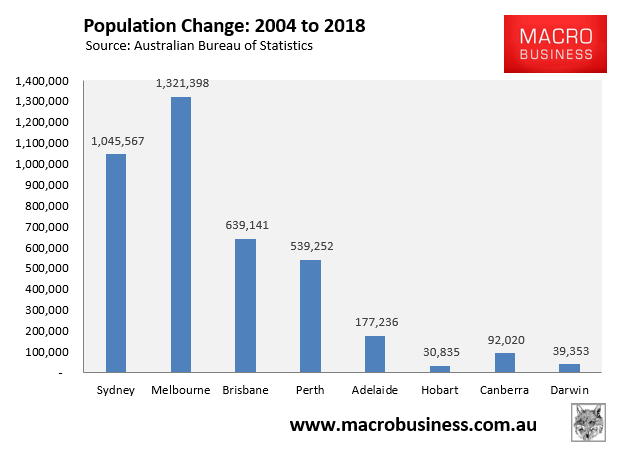
And the projected doubling of Sydney’s and Melbourne’s populations over the next half-century, caused almost entirely by positive net overseas migration (NOM), will have zero impact on congestion…
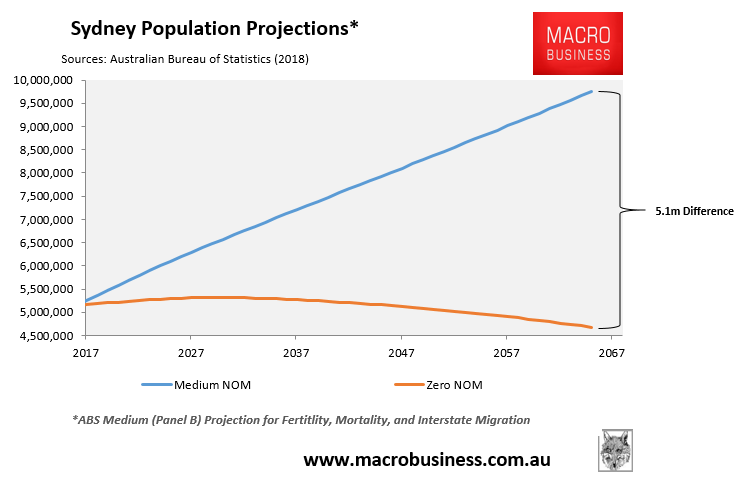
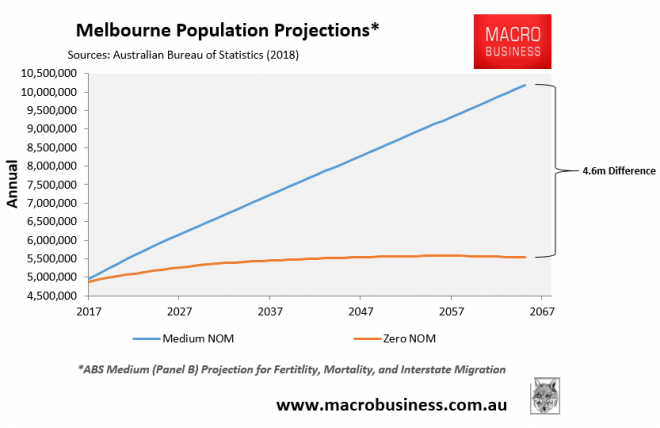
This volume of population growth needs to be put into context:
- It took Sydney roughly 210 years to reach a population of 3.9 million in 2001. Yet the official medium projection by the ABS has Sydney having roughly 2.5 times that number of people in only 65 years.
- It took Melbourne nearly 170 years to reach a population of 3.3 million in 2001. However, the official medium ABS projection has Melbourne’s population tripling in only 65 years.
Kuestenmacher can spin fairy tales all he likes, but the empirical evidence and lived experience unambiguously shows that the immigration-driven population deluge has dramatically increased congestion. Moreover, it is projected to worsen as the population balloons.
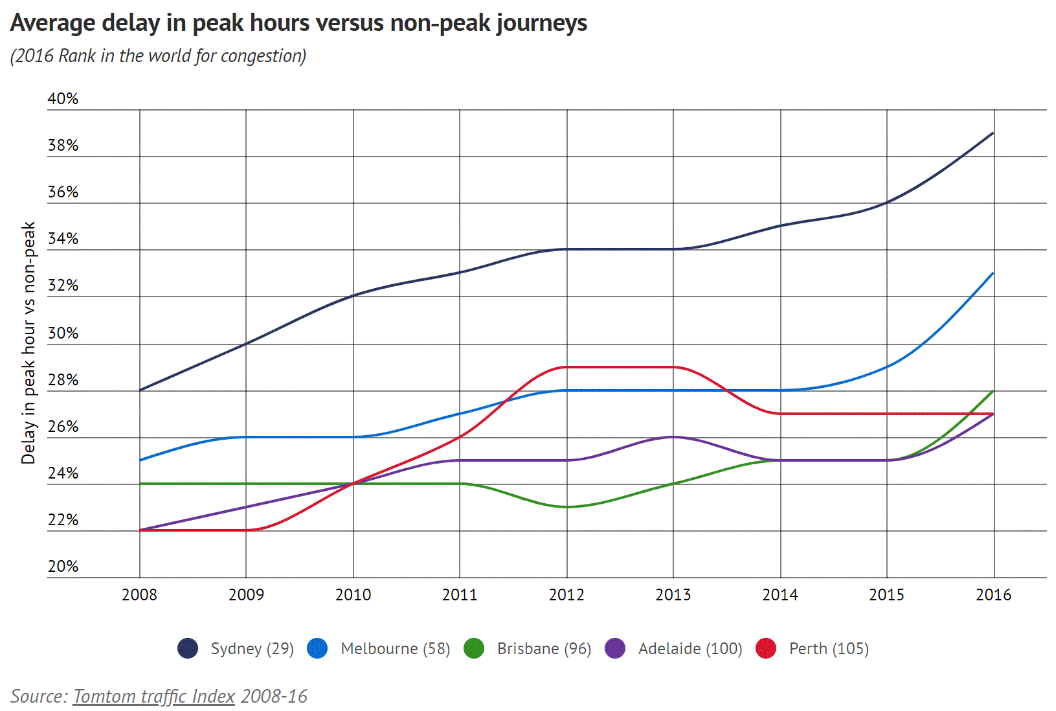
Indeed, Infrastructure Australia’s 2018 report, entitled Planning Liveable Cities, found that Australia’s infrastructure provision is failing badly to keep pace with rapid population growth:
“Infrastructure delivery is struggling to keep pace with rapid population growth and change. Our largest cities are ‘playing catch up’ in delivering infrastructure to support population growth… Our infrastructure funding mechanisms have not kept pace with growth… Communities are increasingly disappointed by their experience of growth…”
In 2010, Engineers Australia estimated Australia’s infrastructure deficit to be $700 billion. A follow-up report in 2018 report by Engineers Australia examined 10-year construction trends and concluded that infrastructure is “not keeping up with population and economic growth” following “almost a decade of underinvestment”.
The International Monetary Fund’s latest Article IV report on Australia similarly noted that Australia “has a notable infrastructure gap compared to other advanced economies” and that “there is an average forecasted annual infrastructure gap of roughly 0.35 percent of GDP through 2040 for basic infrastructure (roads, rail, water, ports), and an additional gap in social infrastructure (schools, hospitals, prisons), likely of a lesser magnitude”. The IMF also warned that “gaps may also be opening faster than expected, given the greater-than-expected rapid population growth in Sydney and Melbourne”.
For its part, the Bureau of Infrastructure, Transport and Regional Economics estimated that congestion cost the Australia economy $16.5 billion in 2015. Moreover, without major policy changes, congestion costs are predicted to reach between $27.7 and $37.3 billion by 2030.
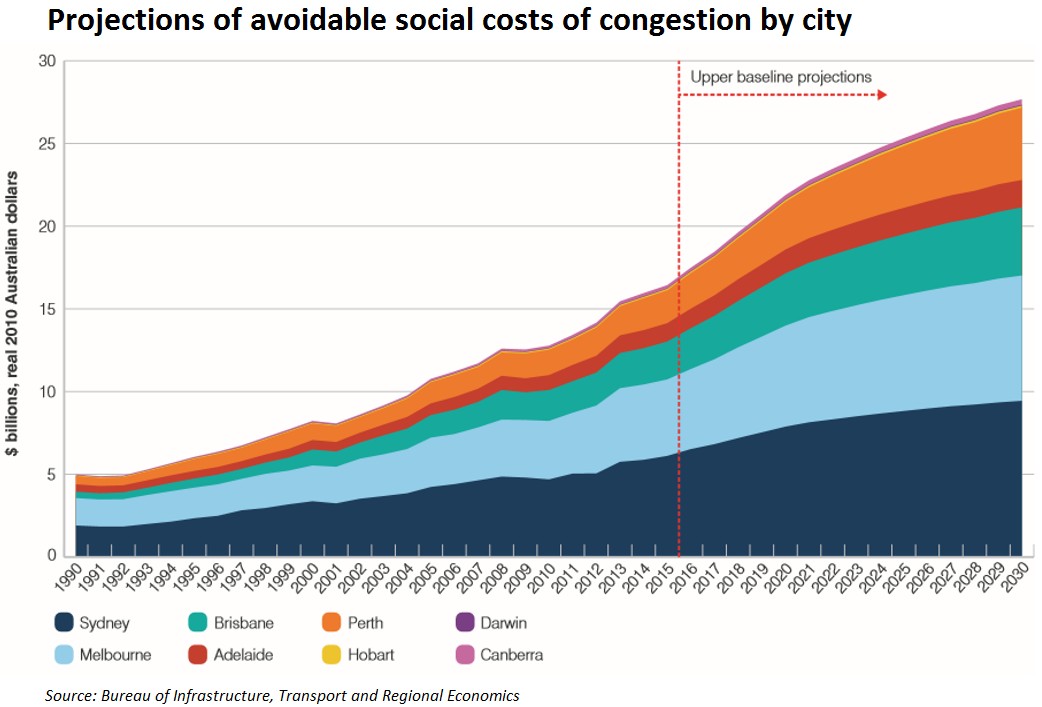
Finally, let’s remember that Infrastructure Australia projects that traffic congestion and access to jobs, schools, hospitals and green space will all worsen in Sydney and Melbourne as their populations balloon to a projected 7.4 million and 7.3 million people respectively by 2046, irrespective of whether these cities build up or out:
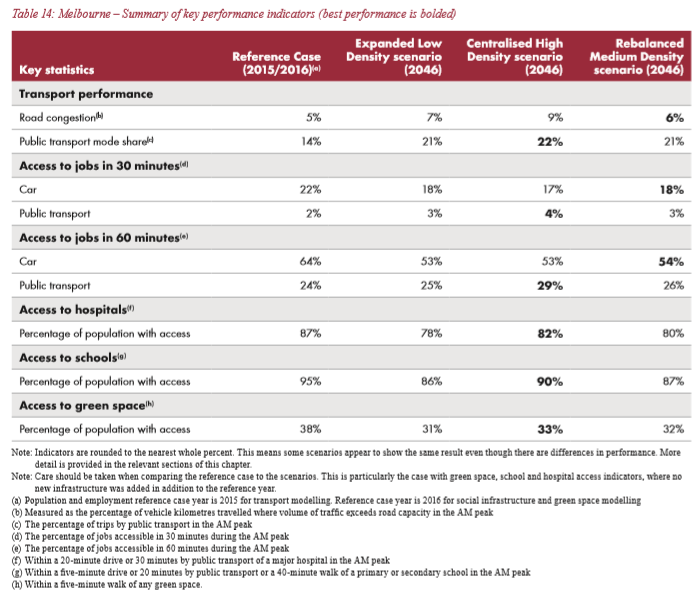
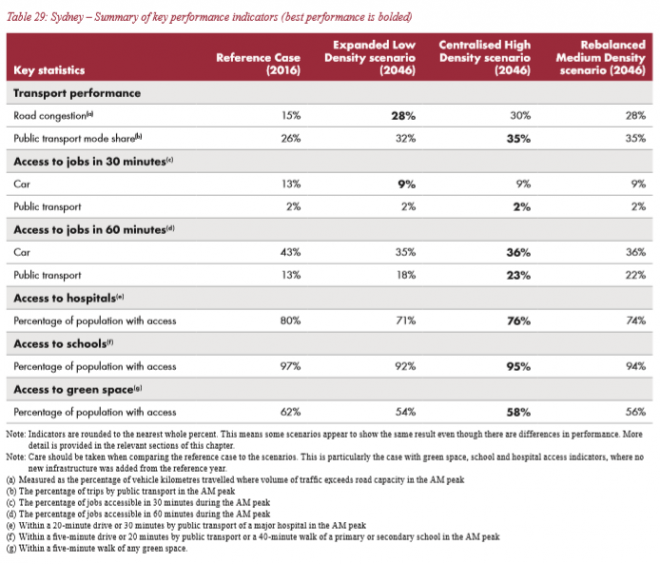
Kuestenmacher’s prescription that “congestion issues in the big cities need to be solved through infrastructure upgrades” is similarly a fairy tale.
In already built-out cities like Sydney and Melbourne, the cost of retrofitting new infrastructure to accommodate greater population densities is prohibitively expensive because of the need for land buy-backs, tunnelling, as well as disruptions to existing infrastructure. These are what economists call ‘dis-economies of scale’.
The Productivity Commission (PC) has been at the forefront highlighting the huge infrastructure costs associated with population growth.
In its 2016 Migrant Intake into Australia report, the PC noted:
“Physical constraints in major cities make the costs of expanding infrastructure more expensive, so even if a user-pays model is adopted, a higher population is very likely to impose a higher cost of living for people already residing in these major cities…
Funding will inevitably be borne by the Australian community either through user-pays fees or general taxation…”
The PC’s 2018 Shifting the Dial: 5 year productivity review also noted that infrastructure costs will balloon due to Australian cities’ rapidly growing populations:
“Growing populations will place pressure on already strained transport systems… Yet available choices for new investments are constrained by the increasingly limited availability of unutilised land. Costs of new transport structures have risen accordingly, with new developments (for example WestConnex) requiring land reclamation, costly compensation arrangements, or otherwise more expensive alternatives (such as tunnels)”.
Infrastructure Australia has also regularly warned on the rising cost of infrastructure provision caused by rapid population growth. For example, its 2018 Planning Liveable Cities report noted:
“…construction of new infrastructure is often more expensive, due to the need to tunnel under existing structures or purchase land at higher costs. The small scale, incremental nature of growth in established areas can also lead to an over-reliance on existing infrastructure, which can result in congestion and overcrowding”.
The fact of the matter is that adding around a Canberra-worth of population to Australia each and every year – with 90,000 to 110,000 people projected for Sydney and Melbourne alone – requires an incredible amount of investment just to keep up.
This explains why Australia’s infrastructure deficit has fallen so badly behind over the past 15 years, and why infrastructure deficits will continue to grow under the mass immigration ‘Big Australia’ policy, in turn eroding residents’ living standards.
Simon Kuestenmacher should stop faking it.

